Carlos Soria: Dhaulagiri, take nine!
Carlos Soria doesn’t give up. The now 79-year-old Spaniard set off again to Nepal to climb his 13th of the 14 eight-thousanders. Already for the ninth time, Carlos will tackle Dhaulagiri. Last year, Soria and Co. had had to abandon their only summit attempt in the upper part of the 8,167-meter-high mountain because they had missed the right route while the fog had become denser. Later heavy snow had impeded a second try. “This time I am sure that we will succeed,” said the probably fittest of all climbing seniors optimistically before his departure for Kathmandu.
![]() read more
read more
Maya Sherpa: Next try on Kangchenjunga
Second attempt. This spring, Maya Sherpa, one of Nepal’s most famous and best female climbers, will tackle Kangchenjunga, the third highest mountain in the world. “I am happy to go there again,“ the 40-year-old told me as we met in Kathmandu last week. “I have found sponsors who support me. However, my goal is not only to climb Kangchenjunga, I like to climb more 8,000-meter-peaks as the first Nepali woman.” In May 2017, Maya and her Nepalese friends and teammates Pasang Lhamu Sherpa Akita and Dawa Yangzum Sherpa had had to turn around on the 8,586-meter-high Kangchenjunga, about 300 meters below the highest point. The entire group of summit candidates had run out of ropes. “One of our Climbing Sherpas told us then that they had made the same mistake in spring 2013,” said Maya. “At that time, they went up to the summit. On descent, two Sherpas and three foreign climbers died because there was no rope, they were tired and it was extremely slippery in the upper part of the mountain, especially on the rock.”
![]() read more
read more
Mingma Gyalje Sherpa: “Discounters are dealing with people’s life”
His secret of success? “Actually this is my job, because I run a company. So I need to lead my clients to the summit,” Mingma Gyalje Sherpa tells me as we sit opposite each other in a café in Kathmandu. In recent years, the 31-year-old has blossomed to the high-flyer among the Sherpas. In fall 2015, he succeeded the first ascent of the West Face of the 6685-meter-high Chobutse in Rolwaling, his home valley – and he did it alone. It was the first solo ascent of a Sherpa in Nepal. Even as an expedition leader, he made headlines. In 2017, no one climbed so often above the magical 8,000-meter-mark as Mingma. The head of the expedition operator “Imagine Trek and Expedition” entered the death zone six times: on Dhaulagiri, Makalu, K2, Broad Peak and twice on Nanga Parbat. Four times he reached the summit (Dhaulagiri, Makalu, K2, Nanga Parbat), the fifth ascent on Broad Peak is disputed. “I will return to this mountain this year,” Mingma announces. “Actually I am quite sure that we made the summit. But this time, I want to reach the highest point of Broad Peak without any doubt, on the one hand to end the debate, on the other for my own satisfaction.”
![]() read more
read more
Coster: “Too busy in the Khumbu Icefall“
The Everest spring season is on. This Saturday, eight “Icefall Doctors“ will be celebrating a puja in the base camp on the Nepalese south side of the highest mountain in the world, a Buddhist ceremony, during which the gods are asked for their blessing. Next week, the Sherpas, who are specialized in this task, will prepare this year’s route through the Khumbu Icefall. At the beginning of April the first commercial teams are expected in the base camp. “I’m wondering how busy it will be on the south side with every year we see the numbers increasing significantly,“ says Arnold Coster, when I meet him today in Kathmandu. “And I wonder how many actually switch to the Tibetan side.“
![]() read more
read more
Stricter Everest waste rules in Tibet
Stricter waste rules apply immediately on the Tibetan north side of Mount Everest. “With the number of climbers is increasing rapidly, more and more waste is produced by climbers in mountaineering activities,” says a statement from the China Tibet Mountaineering Association (CTMA) to the expedition organizers I have received. “Protecting the ecological environment it’s our duty and obligation, also benefit our next generations.” In May 2017, workers and volunteers had collected on behalf of the Tibetan authorities four tons of garbage at altitudes between 5,200 and 6,500 meters on Everest.
![]() read more
read more
Polish K2 winter expedition failed
K2 remains the only eight-thousander still unclimbed in winter. Krzysztof Wielicki declared the Polish winter expedition on the second highest mountain on earth over. “The priority of the expedition is the safety of the participants,” wrote the expedition leader on Facebook. Adam Bielecki and Janusz Golab found during their exploration climb that all ropes up to Camp 1 on the Abruzzi route were blocked. It had to be assumed that the Camps 1, 2 and 3 were destroyed, said Wielicki. In the last week, there had been 80 centimeters of fresh snow. This had increased the avalanche danger, especially in the upper part of the mountain. In addition, only around 11 March a good weather window was expected, but probably it was too short for a summit push, explained Wielicki.
![]() read more
read more
Missing on Kili: Humility and respect
The summit certificate is lying at home, so I could actually tick off Kilimanjaro. But Africa’s highest mountain is still on my mind half a week after my return home. My feelings were too ambiguous during the eight days on the highest mountain in Africa. On the one hand I was able to experience hospitable and helpful Tanzanians, a harmonious expedition team and a really impressive nature. The ascent through the various vegetation levels gave me many unforgettable moments. On the other hand, I realized once more the downsides of mass tourism on the mountains.
![]() read more
read more
Txikon leaves Everest, Urubko K2
One and a half weeks in Africa including the ascent of the 5895-meter-high Kilimanjaro lie behind me. High time to look at the two winter expeditions on Mount Everest and K2. Because they provided plenty to talk about, especially the expedition on K2. First, however, to the highest of all mountains: As he had already done in 2017, the Spaniard Alex Txikon abandoned his attempt to scale Mount Everest in winter without bottled oxygen. A summit attempt last week ended at 7850 meters, just below the South Col, because the cold was much more severe and the wind significantly stronger than predicted.
![]() read more
read more
The hidden mountain
Kilimanjaro played hide-and-seek with me. After the long trip from Cologne via Frankfurt and Addis Ababa to Tanzania, I was looking forward to taking a look at the highest mountain of Africa from the plane. Stupidly, I was sitting in the central aisle. When the pilot announced that Kilimanjaro was now on our left, I roused my neighbor and hurried to a window at the emergency exit to take a snapshot. But I came too late. The lucky ones were able to catch at least a glimpse of the Kili. I only saw clouds.
![]() read more
read more
4 questions, 4 answers with Tino Villanueva
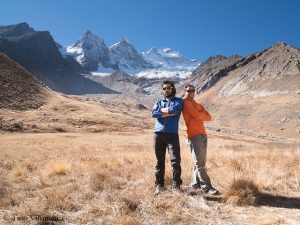
Tino Villanueva (l.) and Alan Rousseau (r.), in the background Rungofarka (the middle of the three peaks)
Better late than never. There was always something coming up, so I did not have the time to report on one of the most impressive climbing achievements of last fall. In the beginning of last October, Tino Villanueva and Alan Rousseau succeeded the first ascent of the six-thousander Rungofarka in the Indian Himalayas. The two American mountain guides first attempted a direct line through the North Face, but turned around at 6,000 meters. Later they reached in five days the summit of the well-shaped mountain via the North Ridge. Finally, I contacted Tino, and he answered my questions:
First of all congrats on your great performance. You succeeded the first ascent of the 6,495-meter-high Rungofarka. How far to your limits did you have to go?
![]() read more
read more
Bad weather slows down winter expeditions
“The weather is not the best,” Krzysztof Wielicki, leader of the Polish K2 winter expedition, writes on Facebook. “Full of clouds and wind.” Denis Urubko ascended via the Abruzzi Spur to an altitude of 6,500 meters to check the condition of the route. Some old ropes are to be replaced, says Wielicki. The Polish climbers had abandoned “for reasons of safety” their original plan to climb the Basque route (also known as the Cesen route). Previously Adam Bielecki and Rafal Fronia had been injured by rockfall. While Bielecki is able to continue, Fronia had to cancel the expedition because of a broken forearm.
![]() read more
read more
Another incident on K 2
For the Polish climber Rafal Fronia, the winter expedition on K2 is over. “Today, at 2pm local time, while approaching to Camp 1 (5,900m), a smoldering falling stone hit Rafał Fronia in the forearm causing a fracture,” expedition leader Krzysztof Wielicki informed from the base camp on Facebook. “After descending to the base and medical supply, he expects to be evacuated by a helicopter to the hospital in Skardu.” Fronia is to return home. In spring 2017, the Polish climber had scaled the eight-thousander Lhotse in Nepal without bottled oxygen.
![]() read more
read more
Nanga Parbat: Revol’s anger after the rescue
“We could have saved Tomek.” With this sentence, the French mountaineer Elisabeth Revol has triggered a debate. Could her Polish rope partner Tomek Mackiewicz still be alive, whom, suffering from severe high altitude sickness and slowblindness after their summit success on Nanga Parbat, she had had to leave at 7,200 meters, if the rescue at the end of January had started faster? On the late evening of 25 January, Revol had made several emergency calls. “It’s a race against the clock when you set off a rescue,” Elisabeth said at a press conference in Chamonix on Wednesday. “It took, in fact, 48 hours for something to happen. So clearly I have a lot of anger inside of me – and Tomek could have been saved if it had been a real rescue carried out in time and organized.”
![]() read more
read more
Moment of shock for Adam Bielecki on K2
“Eh, that was close,” Adam Bielecki writes on Facebook from K2 Base Camp. “Several dozens of meters below camp 1 [at 5,800 m] I was hit by a big stone. The result is a broken nose and six stitches, which were professionally put by Piotr Tomala and Marek Chmielarski directed by phone instructions from Robert Szymczak. In a few days I should be back in a perfect condition.” Previously, Krzysztof Wielicki, the leader of the Polish winter expedition on the second highest mountain on earth, had reported that Bielecki had been injured on the forehead and nose, although he had worn a helmet. Wielecki emphasized that the 34-year-old had not lost consciousness and was still able to descend to the base camp: “We hope that he will soon be back to full strength.”
![]() read more
read more
New expedition rules in force in Nepal
The much-discussed new rules for expeditions in Nepal are in effect. According to Dinesh Bhattarai, General Director of the Ministry of Tourism, the amendment of the mountaineering rules was published today in the government gazette. “The Department of Tourism can now issue certificates to the Sherpa summiters,” Bhattarai told the newspaper “The Himalayan Times”, referring to the only new rule that in advance had been met with approval by all sides.
![]() read more
read more



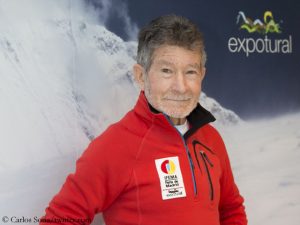




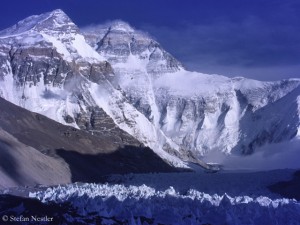
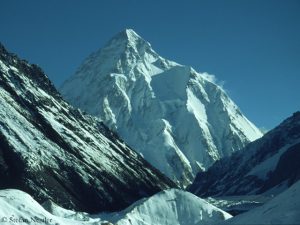
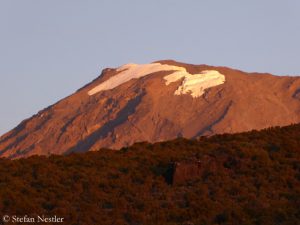
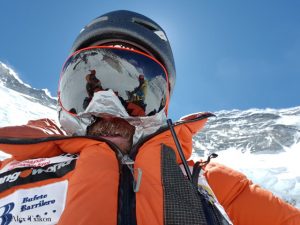
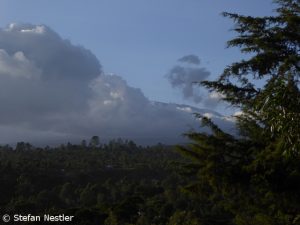
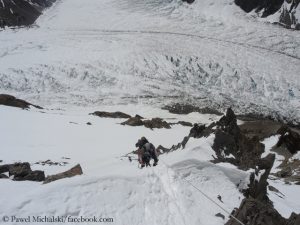
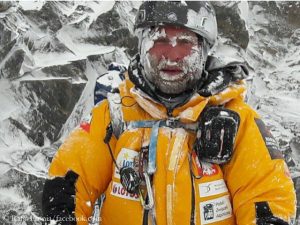

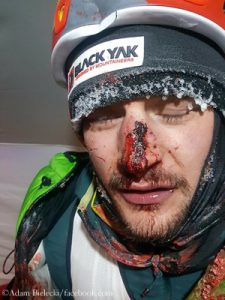
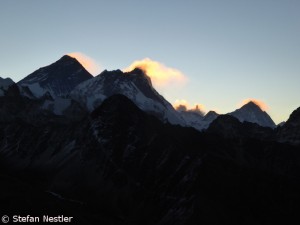





Feedback